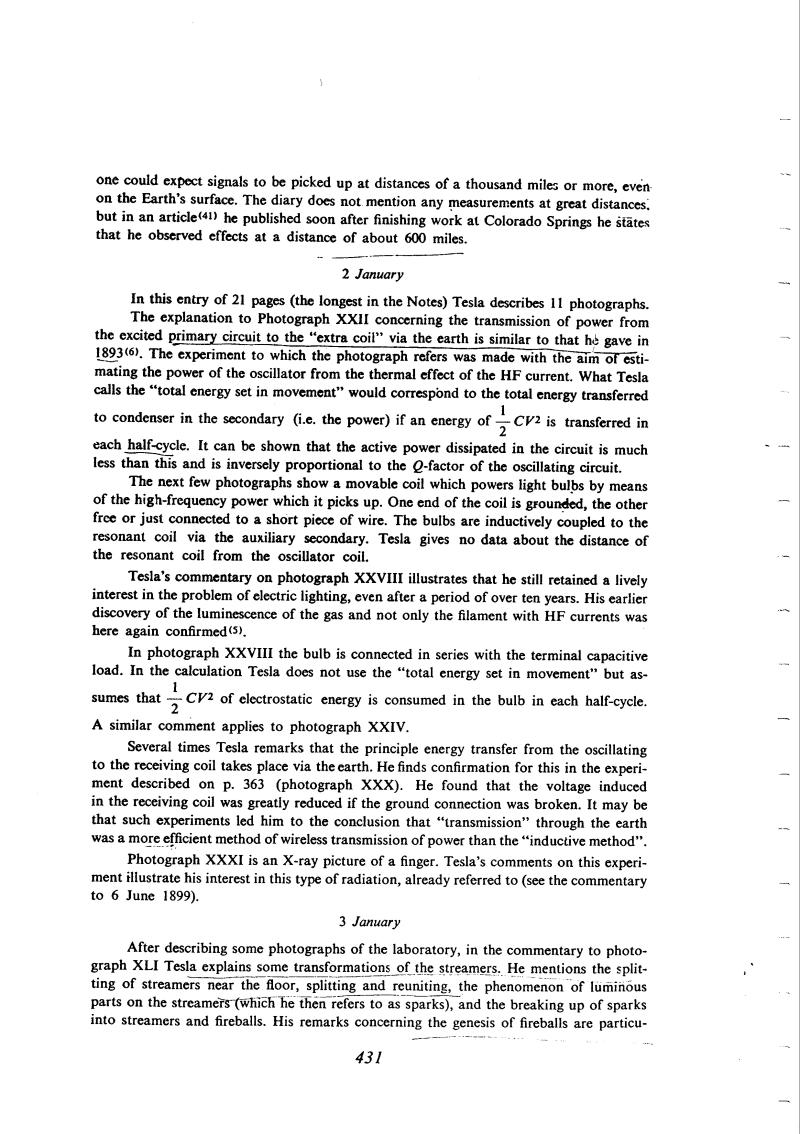January 2
In this entry of 21 pages (the longest in the Notes) Tesla describes 11 photographs.
The explanation to Photograph XXII concerning the transmission of power from the excited primary circuit to the âextra coilâ via the earth is similar to that he gave in 1893(6). The experiment to which the photograph refers was made with the aim of estimating the power of the oscillator from the thermal effect of the HF current. What Tesla calls the âtotal energy set in movementâ would correspond to the total energy transferred to condenser in the secondary (i.e. the power) if an energy of $!{1 \over 2}$! CV2 is transferred in each half-cycle. It can be shown that the active power dissipated in the circuit is much less than this and is inversely proportional to the Q-factor of the oscillating circuit.
The next few photographs show a movable coil which powers light bulbs by means of the high-frequency power which it picks up. One end of the coil is grounded, the other free or just connected to a short piece of wire. The bulbs are inductively coupled to the resonant coil via the auxiliary secondary. Tesla gives no data about the distance of the resonant coil from the oscillator coil.
Tesla's commentary on photograph XXVIII illustrates that he still retained a lively interest in the problem of electric lighting, even after a period of over ten years. His earlier discovery of the luminescence of the gas and not only the filament with HF currents was here again confirmed(5).
In photograph XXVIII the bulb is connected in series with the terminal capacitive load. In the calculation Tesla does not use the âtotal energy set in movementâ but assumes that 1/2 CV2 of electrostatic energy is consumed in the bulb in each half-cycle. A similar comment applies to photograph XXIV.
Several times Tesla remarks that the principle energy transfer from the oscillating to the receiving coil takes place via the earth. He finds confirmation for this in the experiment described on p. 363 (photograph XXX). He found that the voltage induced in the receiving coil was greatly reduced if the ground connection was broken. It may be that such experiments led him to the conclusion that âtransmissionâ through the earth was a more efficient method of wireless transmission of power than the âinductive methodâ.
Photograph XXXI is an X-ray picture of a finger. Tesla's comments on this experiment illustrate his interest in this type of radiation, already referred to (see the commentary to 6 June 1899).


